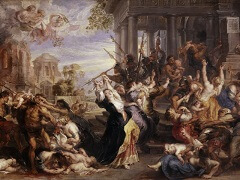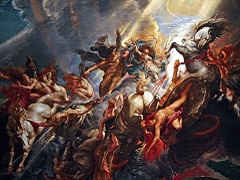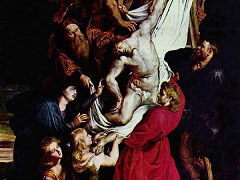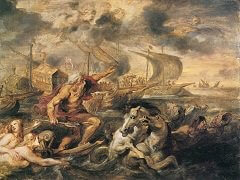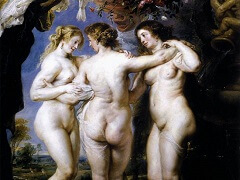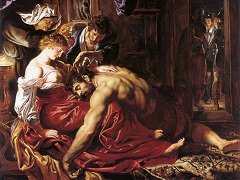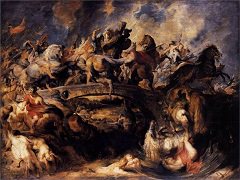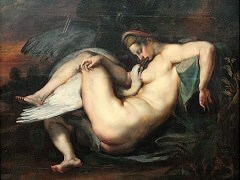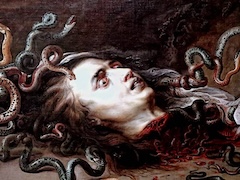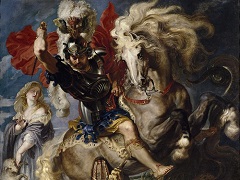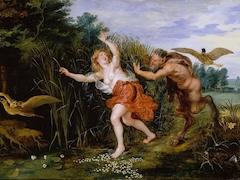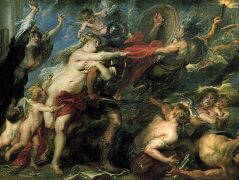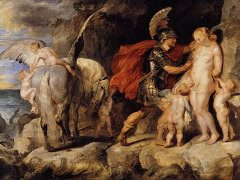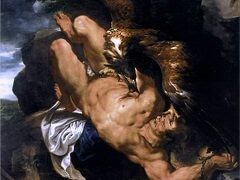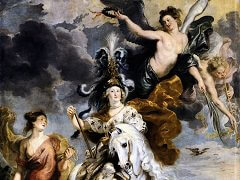The Defeat of Sennacherib, 1612 by Peter Paul Rubens
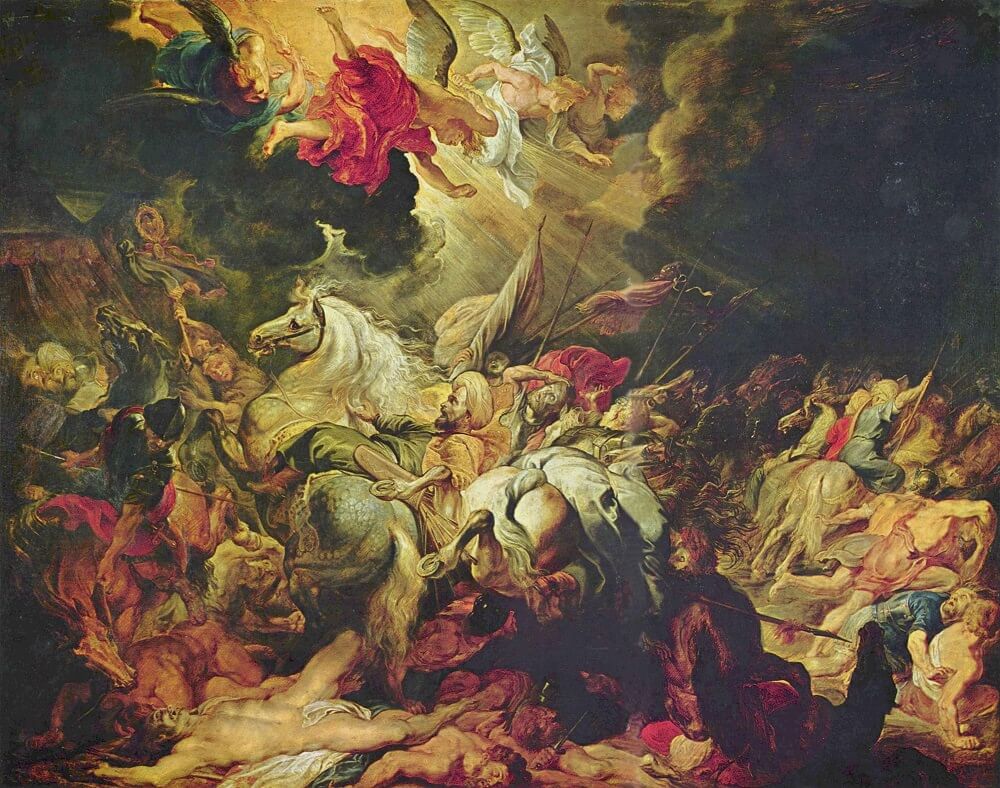
In the Defeat of Sennacherib, the Assyrian king is riding across the country with the leaders of his army, when suddenly, in the midst of a ray of light that flashes from the depths of thick darkness, four angels, armed with thunder bolts, appear in the sky. The whole army takes to flight, the king's horse rears, and Sennacherib is obliged to cling to his mane; his warriors roll in the dust around him, while the horses gallop in terror-stricken flight. On the ground the dead and wounded lie in heaps.
It is a scene of unparalleled confusion and disorder. The anguish of the horsemen and the panic of the horses are represented in the boldest and most striking manner. Sennacherib's horse rears on his hind legs to an almost perpendicular position, beating the air madly with his fore feet, while his mane and tail toss wildly. Another horse in flight throws his hind feet so high that he looks as if he must turn a somersault head-foremost; another snorts and neighs with nostrils dilated in mortal terror; the riders, in fear for themselves, give no thought to quieting their steeds.
This composition with its violent movement evidently springs from the same dramatic source as the Battle of the Amazons, though it is not equal to it. The painting, too, is drier, the effects of light are lacking and the passages of shadow in the sky are disagreeably hard.



